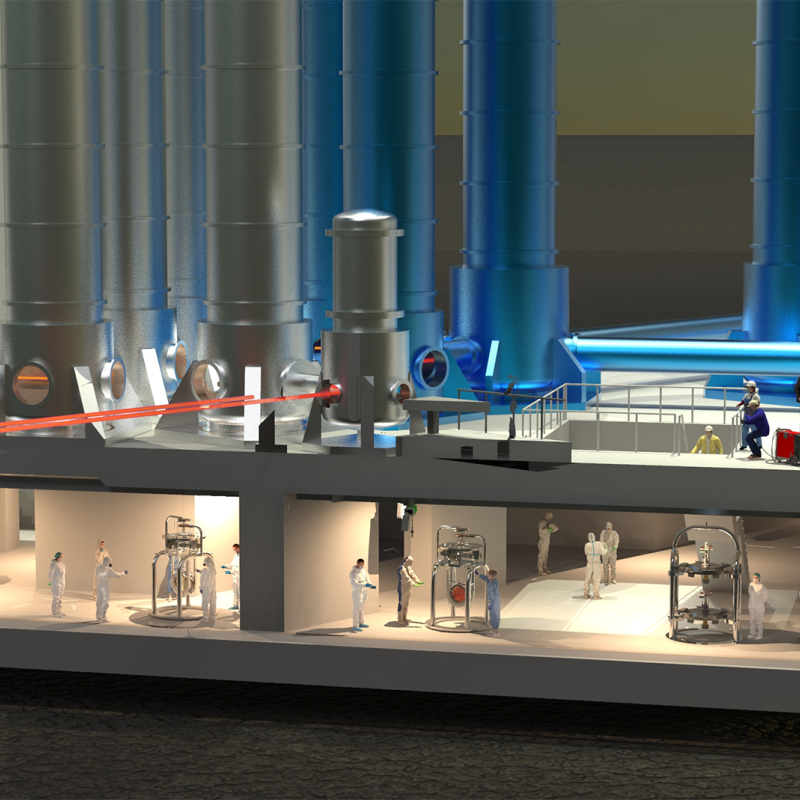About the Einstein Telescope
With the Einstein Telescope, scientists aim to capture signals dating back to just after the Big Bang, and conduct research into the nature of black holes. This makes the observatory of great significance to international physics and astronomy. As a mission to high-tech companies and a driver of technological progress, the Einstein Telescope is also a wonderful opportunity for society.

Gravitational waves: ripples in the universe
Our universe vibrates daily as black holes or neutron stars orbit or collide somewhere in the universe. Albert Einstein predicted back in 1916 that distances stretch and contract almost immeasurably when such a gravitational wave passes by. In 2015, the U.S. detector LIGO managed to measure that phenomenon for the first time.
With the Einstein Telescope, researchers will look for instance at the birth process of black holes, the structure of neutron stars, and the nature of the universe immediately after the Big Bang. They also want to test the predictions of Einstein's theory of relativity as never before. This will provide new insights into our universe. This will give us new insights into our universe. This makes the observatory of great significance for international physics and astronomy.
Albert Einstein:
Imagination is more important than knowledge
Underground observatory
The three 10-kilometer tunnels of the Einstein Telescope will be sited 250 to 300 meters underground in order to make undisturbed measurements of gravitational waves. Above ground, hardly anything will be visible of the observatory.
The Einstein Telescope measures gravitational waves by constantly monitoring the length of its three detector corridors with sensitive lasers and vibration-free suspended lasers. If that length changes in a specific pattern, it is the signal of a passing gravity wave. The Einstein Telescope will detect a thousand times more gravity waves than its predecessors.

Location
The Einstein Telescope has high requirements for its site location. A stable soil with little disturbance to the environment. But also a network of knowledge partners to collaborate with, companies that can provide the high technology, and pleasant, accessible living and working environment.
In the border region of Belgium, Germany and the Netherlands (Meuse-Rhine Euregio), all these success factors come together.

Timeline
Currently, the three countries are jointly working on feasibility studies in various fields, which should eventually result in a bid book. Other countries in Europe can also announce their formal candidacy for the Einstein Telescope. Currently, in addition to our border region of the Netherlands with Belgium and Germany, Sardinia is also in the race as a possible site for the Einstein Telescope. Probably in 2025/2026 the most suitable location will be known and where this top facility will be built.
